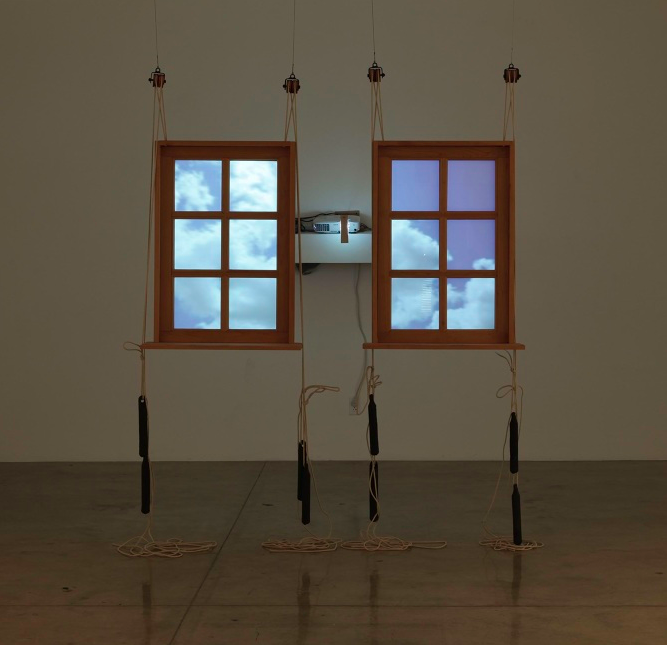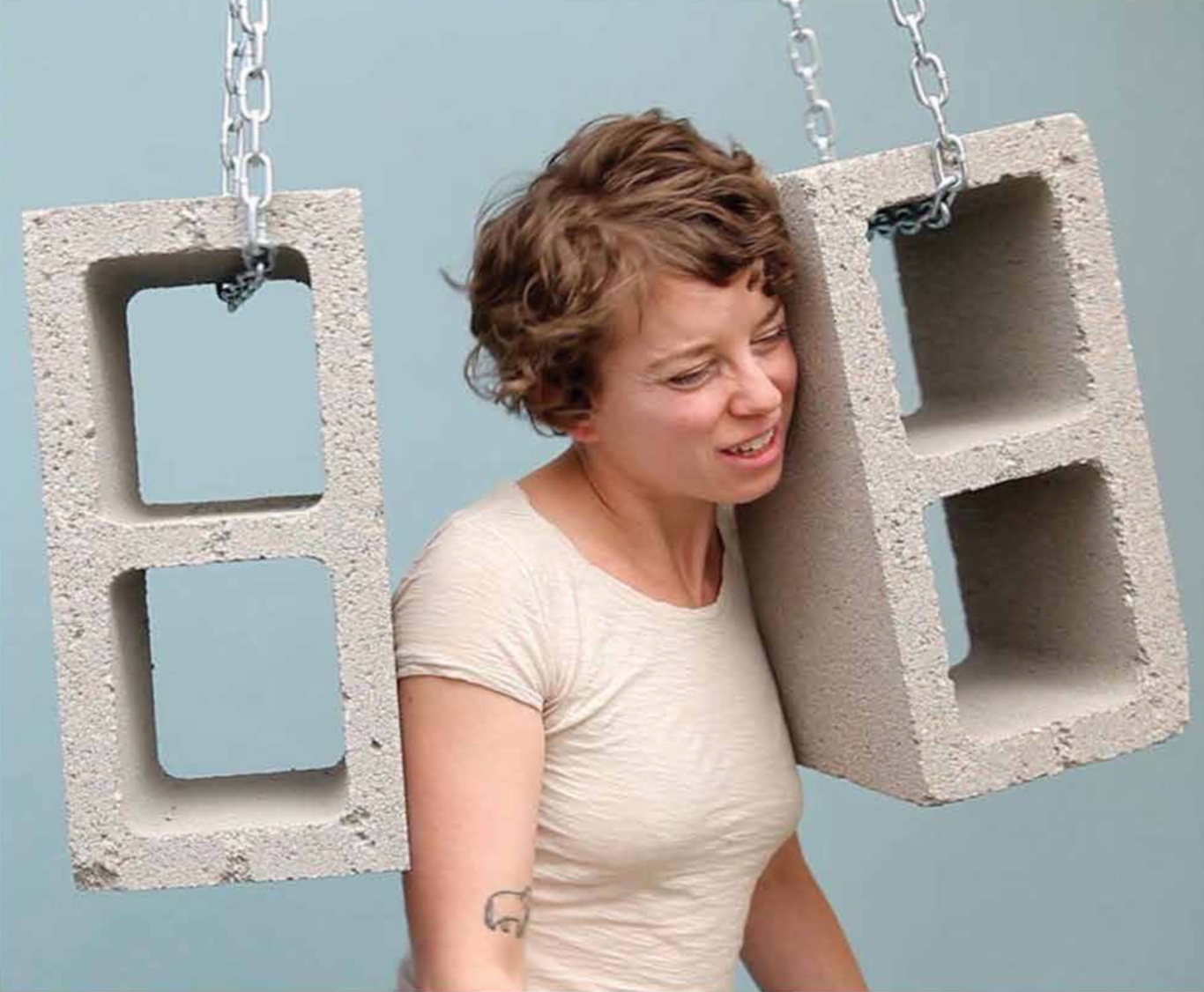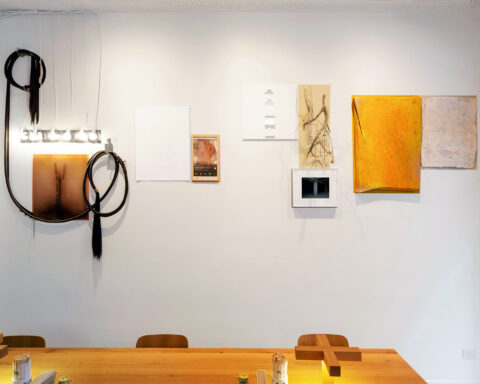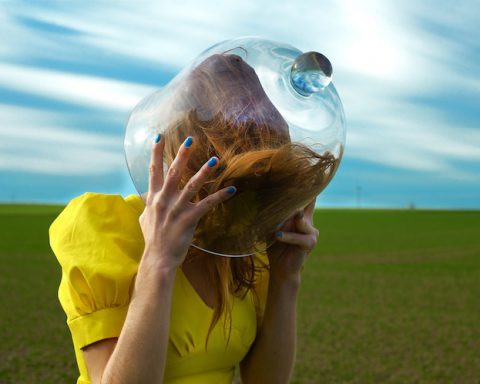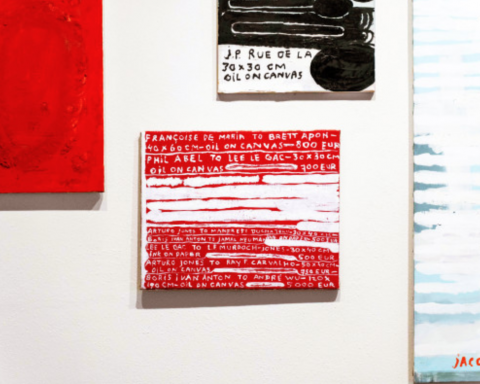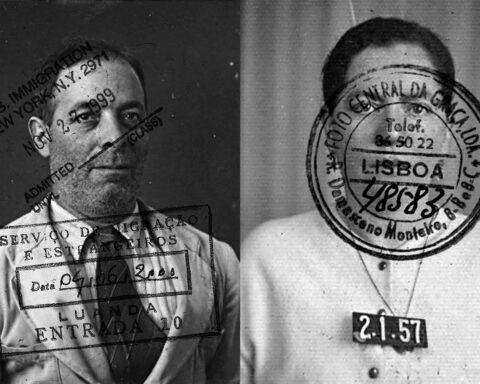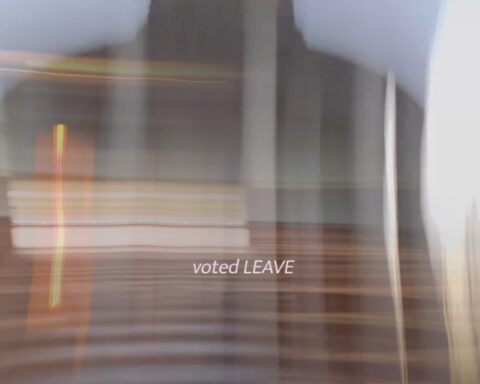Anna Garner (b. 1982) is a multimedia artist whose practice encompasses photography, video, performance, and sculpture. Anna received her B.A. in Liberal Arts from The Evergreen State College in Olympia, WA and her MFA at the University of Arizona in Tucson, AZ. In 2013 Anna received the bronze prize in the Videoholica International Video Art Festival, and in 2014 participated in an artist residency at Skowhegan School of Painting and Sculpture. Recent exhibitions include video screenings at Trestle Gallery in Brooklyn, NY and Northwest Film Forum in Seattle, WA as well as a three-person exhibition at Sala degli Archi in Livorno, Italy. Anna’s work investigates how the body can be shaped, sensed, relied upon or distrusted. She focuses on the body as an indicator of the interior performing as an instrument that reveals veracity through movement and presence. Through physical challenges and trials Anna pursues a collapse of self-control that reveals vulnerability, personal limitations, and clumsiness.
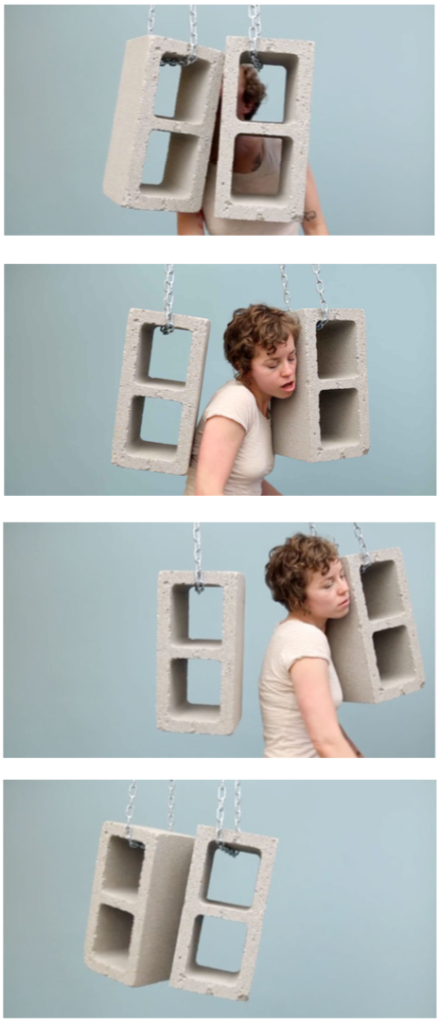
Francesca Pirillo: When did you first become interested in art? What’s your background?
Anna Garner: My interest in art began with photography. My father is an ardent photographer, and I grew up with his work in the house and going out on location with him for shoots. I remember having little patience while I sat and waited for him to adjust his camera and wait for the right shot. In spite of that, as I got older I became more and more interested in getting behind the lens, and in looking at things photographically. When I was eighteen my father gifted me a Nikon F3 camera. As I began to experiment with this camera and to apply myself to developing my craft I started to think about myself as an artist and to study the history of the medium and artists using photography.
F.P.: Your practice includes so many different activities: photography, video, performance, and sculpture … Where did you start? What is the discipline that most informs your research?
A.G.: I consider my research to be first and foremost lens based; most often when I do performance it is for the camera, and when I build a sculpture it is used in a video or becomes part of an installation using video.
This stems from my background and beginnings as a photographer. I use the vocabulary I developed through photography in my video, performance, and sculptural work.
I think a lot about framing and lighting when I set up and shoot video pieces, and I think about the videos working in a series, much like a photographic series. When I exhibit video pieces I show several pieces in a row or in a space, with the intention for the works to interact and through proximity and placement to create further narrative and associations.
F.P.: In your performances you frequently carry out physical challenges, like in Unyielding, Slowing the time, Surrogates... They seem to me to be emblems of our daily lives. Can you explain in more detail about this aspect? What is the message behind it?
A.G.: When I speak about my work I often describe the performances as physical challenges; through engaging with these challenges I seek to test my capacity to finish or endure the effort.
The actions bear no fruitful outcome other than to prove I can complete the action; in their futility the work parodies the emptiness of everyday strivings for meaning, achievement, and perfection. What is realized in the work is a corporeal contentedness in the act of doing, a bodily awareness through non-resistance to the action.
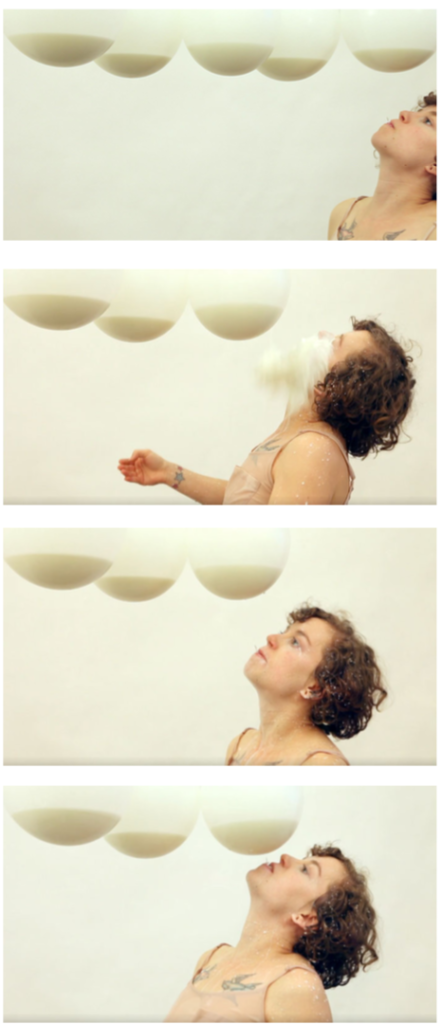
F.P.: What do you want people to take away from your art?
A.G.: First and foremost I want viewers to find something to laugh at in the work and in response find something to laugh at in themselves. I hope that the humorous and visceral quality of the work allows for a broad range of viewers and responses. In addition because I show my video work as a series there are multiple pieces playing at the same time. The multiple works create an environment that is overwhelming, I intend for this to heighten the feeling of physical discomfort and also of sympathetic identification.
F.P.: Could you tell us a bit more about Surrogates?
A.G.: In many of my works I interact with inanimate objects, paper bags, balloons, wood, and in Surrogates cinder blocks. These inanimate objects serve as standins and placeholders; my interaction and attempts at proximity with the objects affect a desire for contact and interruption of solitary pursuit. Using areas of my body associated with intimacy and tenderness, face, cheek, and chest, as points of contact with the brick I draw attention to a want for closeness. Yet this want is returned with scraping, hardness and rough surface to vie with.
The space between the bricks becomes a point of intimacy as well, as I am held between the two unable to push them apart.
The actions of pushing apart yet also being held between, conflict each other offering two possibilities for the interaction. Neither potential is reached; I am unable to break apart the bricks or find an amenable intimacy.The act becomes Sisyphean as each effort to find the right vantage point and exertion of force fails. Surrogates is shown as part of a triptych including Sequential Interactions, and Lineage. These pieces similarly convey Sisyphean effort and intimate interactions with inanimate objects.
F.P.: Your Repeated actions to an exasperation remind me a bit of several Marina Abramovic’s works. Has it influenced your research? What are the most important influences that have moved you as an artist?
A.G.: The work of Marina Abramovic has absolutely influenced my own practice. What I glean from her work is a focus on transformation through ritual and individual experience becoming collective. However whereas Abramovic uses the immediacy of live performance to engage the viewer I am more interested in the level of manipulation and control I have through working with video. I find the ability to limit what the viewer sees through the edit and framing of the work, to allow me to better convey my ideas.
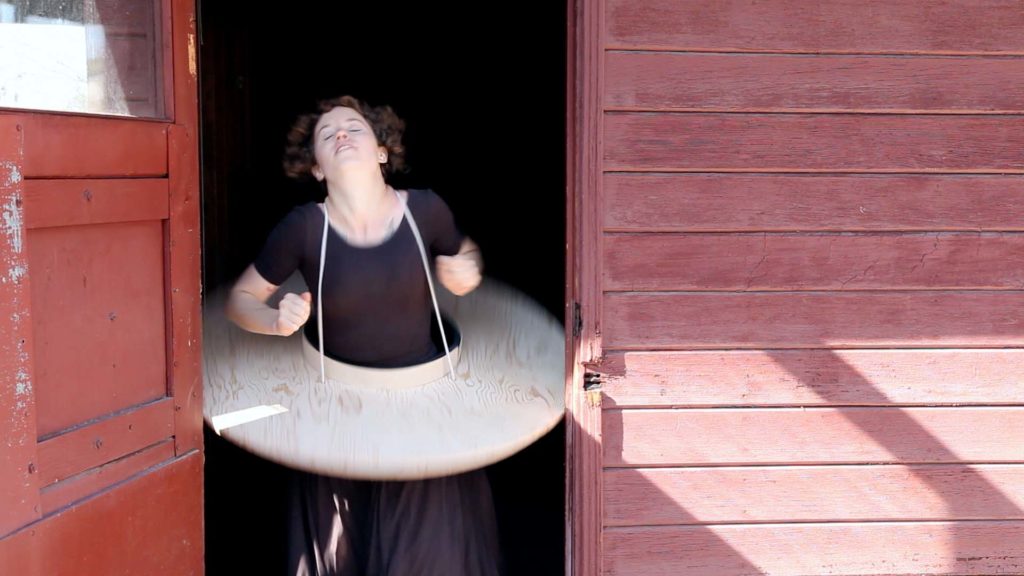
UNYIELDING
Single Channel Video Duration 3’10” 2013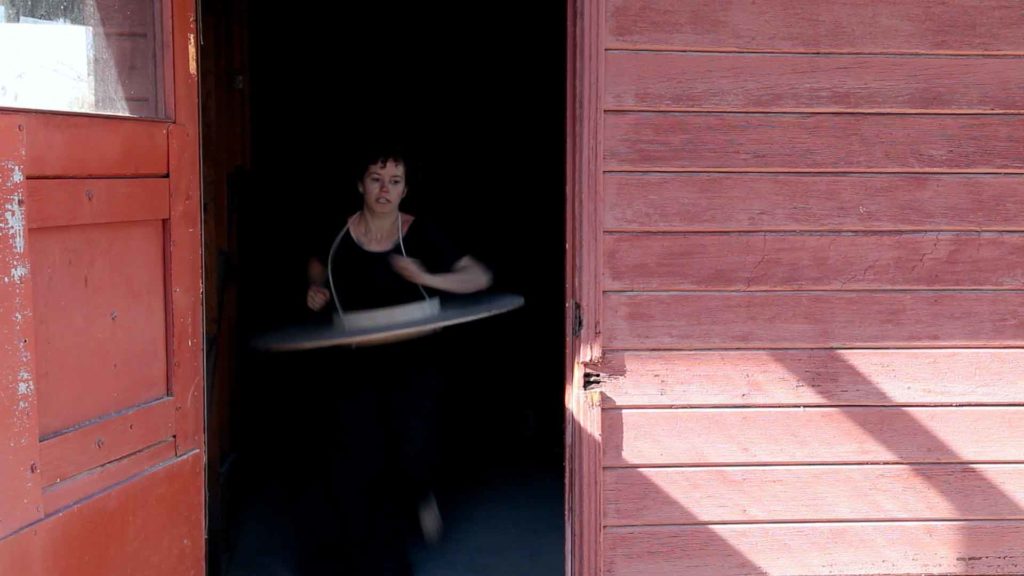
UNYIELDING
Single Channel Video Duration 3’10” 2013
I consider my influences to be vast as I am constantly reading and looking at other artists’ work.
Most recently I have been interested in humor, and have been watching old silent films with Buster Keaton, Charlie Chaplan, and Jacques Tati. I also just read Simon Critchley’s On Humor, which connected for me the way that physical comedy mediates the experience of being a body and having a body, bridges the physical and metaphysical.
Working with performance for video there is a substantial history to pull from.
My research spans from Bauhaus ballet to 1970s performance art to contemporary video artists such as Kate Gilmore.
I also have a background in dance including ballet, modern, and improvisation.
Due to this I am also inclined to look at choreographers’ work to understand how they use the language of movement. Recently I have been looking at Trisha Brown, Ann Liv Young, and Michael Clark.
F.P.: What about Lineage? Could you tell us a bit about this work?
A.G.: As stated earlier Lineage is part of a triptych including the works Sequential Interactions and Surrogates. It deals with similar themes as I described for Surrogates, yet unlike Surrogates it embodies repeated actions with individual objects in a linear route. The bags again are standins for points of connections, my cheek and head are again used as a point of force, meeting, and contention. The continued interactions allude to repetitive behaviors, to the act of going back for more despite knowing that there is nothing effectual, meaningful, or beneficial there.
F.P.: The Impossibility of an Augury is an artwork of high intensity, which is surely very important to you and intimate, as it speaks of a personal event in your life that you deeply marked. Could you talk about it?
A.G.:The Impossibility of an Augury deals with the way stories and grief are passed down through generations and examines the impact of my grandfather’s drowning. Despite the fact that his death happened before I was born I look at how this narrative, that affected my mother’s life deeply, became part of my own narrative through its retelling. The work is comprised of two windows suspended on a pulley system, projected into the windows is a video depicting the arc of a storm.The windows embody an attempted and failed augury, which if successful would have alerted my grandfather of the storm that capsized his fishing boat, and thus prevented his death. The defeated omen alludes to my ineffectiveness in the situation and points to the frustration of wanting both separation and propinquity to the event.
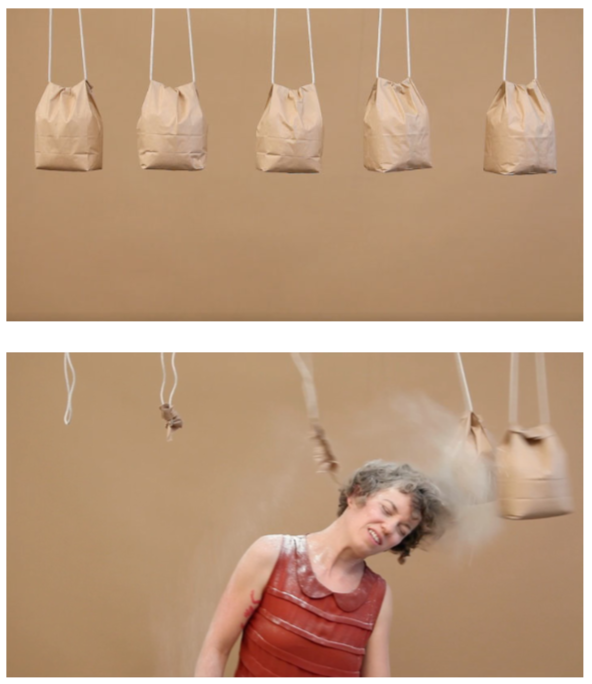
F.P.: What are you working on at the moment?
A.G.: My current studio research focuses on physical comedy (pratfall) and pitting my petite stature, 4’11” and approximately 100lbs, against persons that are at least twice my size.
I am working on videos that reenact pratfall stunts, stretching out the moment of tension and stunting the comedic release. Some of these actions include falling off an unstable bench, sawing off a piece
of wood that I am sitting on, and laying down banana peels for other people to slip on.
The works dealing with size examine the position of the underdog and reverse the relation between my competitor and my-self. In these pieces I engage in comedic acts of athletic skill including chasing, tickling, tackling, and climbing on top of my larger adversaries.
